![]()
Cambodia Travel Notes - Part 4 (Siem Reap)
There may be many other interesting things in the city of Siem Reap in which Angkor Wat is located, but I will only tell you about this small, obscure War Museum. This place does not have the massive funding from UNESCO or some such. In fact, it is not appreciated by the local chamber of commerce types because it creates an image problem.
During my group tour of Cambodia, the guide offered us an option side trip during the day. We could either take a rest at the hotel, or else we can tour the War Museum. However, the museum trip would only possible if ten persons were willing to pay USD 10 each for a total of USD 100. I took the offer but nobody else did. So I told the tour guide that I would be willing to pay USD 100 myself to take this tour. So this was what happened, with two women coming along for the free ride.
The first half of this post will be about guns and ammunition. These pertain to the war between the Khmer Rouge and the Vietnamese-backed regime. The first two photos are for a Russian troop transport helicopter and a MIG jet fighter. Neither figured significantly in what was primarily a land war.
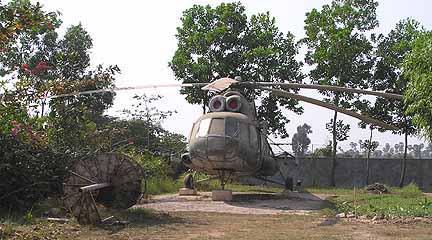

The next two photos are those of anti-aircraft guns. Since not many aircrafts were flying, this must not be significant. Right? Wrong! The anti-anticraft guns were turned not to aim into the air but were leveled to spray the ground with rapidly fired rounds. They were devastatingly effective because they can cover wide areas with intense and indiscriminate firepower.

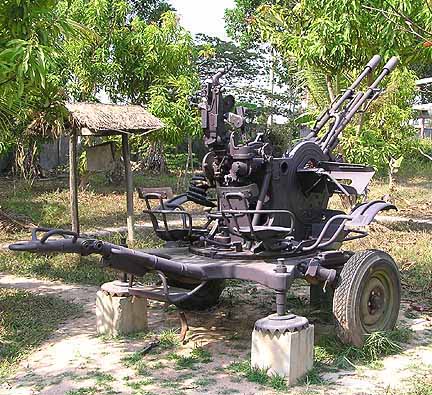
Here are some more artillery pieces. I was given (in a clinical manner) the technical specifications such as such a piece had a reach of 10 kilometers (=6.2 miles) with a kill radius of 100 meters and so on. After a while, I could no longer keep track of which one does what. Ten kilometers? I can't even see that far. 100 meters? That is just about everything within reach.


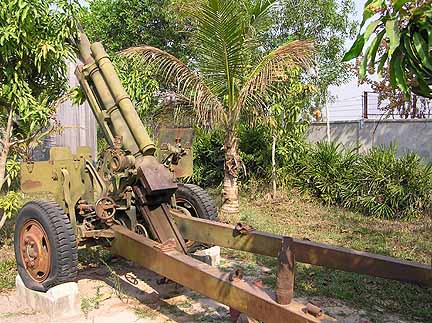
Korean-war vintage American Horowitz

Russian-made "Stalin's organ" rocket launcher
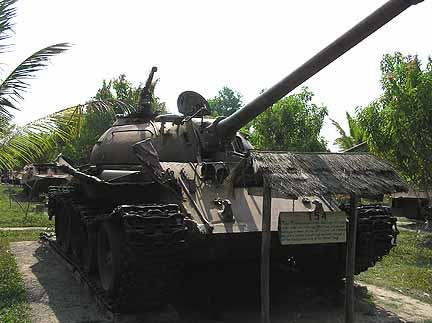
Russian-designed T54 tank
I will distill the essential messages from the local museum guide:
All of the above weapons were supplied for free by China, Russia and the United States of America. I repeat, the weapons were absolutely for free.
The Chinese basically provided copies of Russian-designed weaponry, but these copies were regarded by the end-users as superior to the original in terms of effectiveness and durability.
Here is the kicker: the combat forces would have to pay for all the ammunition. Thus, you are given an artillery piece for free but you would have to pay for each and every ammunition shell.
As of today, the United States of America has forgiven Cambodia for all outstanding debts on unpaid ammunition expenditure. China and Russia have still not made any resolution.
This is what I was told. You can think whatever you want.
The second part of the presentation was about land mines. The formal name of the war museum is in fact the Cambodian Land Mine Museum.
The following public service advertisement can be found in many places in Cambodia. It is a reminder that you should not go into areas where land mines have not been cleared. At the end of the civil war, it was estimated that there were 13 million land mines for a population of 8 million. Every citizen gets at least one.
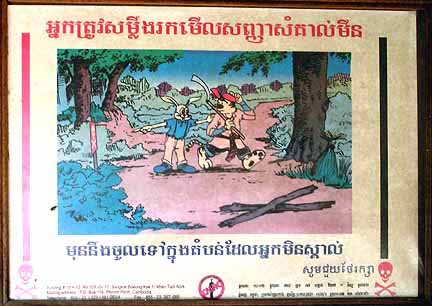
There are many different kinds of land mines, from anti-personnel ones to anti-tank ones. The average cost of a land mine is about US$1, and there are any number of suppliers. Some mines are designed to kill people instantaneously, some are designed to maim for a long and slow tortuous death, some are designed to amputate the lower limbs, some are designed to spring into the air and cause damage to the upper torso and some are used to destroy only heavy tanks. Some can be located by metal detectors, while others cannot be. There are no maps as to where the landmines had been laid by the various sides of the conflict.
Our museum tour guide, who has an artificial leg on account of a landmine, told us casually that he is lucky to be talking to us today only because the Bulgarians were such lousy manufacturers.

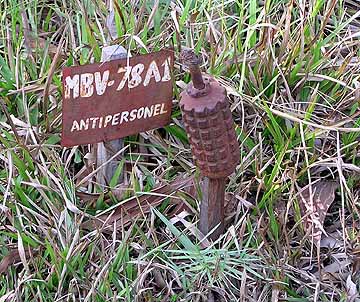

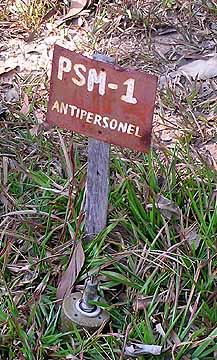

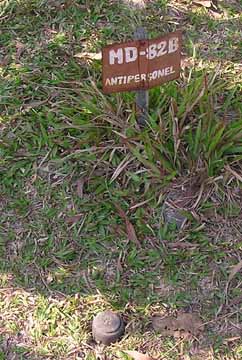
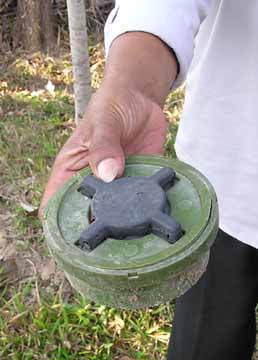
At every popular tourist site, there were groups of landmine amputees begging for money. At the entrance to Ta Prohm (made famous by tomb raider Lara Croft), there was a band of land mine amputees playing popular music and looking for donations. Today, every day in Cambodia, at least one person still steps on a landmine on the average somewhere. This is a regular item in the daily news reports in Cambodia.
